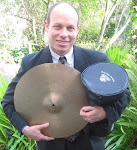U.S. Poverty Rates Higher, Safety Net Weaker than in Peer Countries (Issue Brief #339, July 24, 2012) argue Elise Gould and Hilary Wething of the Economic Policy Institute (EPI).
The extent of child poverty is even more severe. In "2009 the United States had the highest rate of child poverty among peer countries at 23.1 percent..." and the child poverty gap, the difference between those in poverty to those with median income, is 37.5 percent, again, the highest among peer countries. Thus American poor kids face high relative deprivation compared to the rest of American society.
Lastly, the United States, through taxes and transfer programs, spends little compared with its peers to reduce child poverty. Child poverty is not merely about who can afford a burger and fries. It also affects educational achievement. David Berliner argues that targeted " economic and social policies have more potential to improve the nation's schools than almost anything currently being proposed by either political party at federal, state or local levels" (quoted in American Teacher, January/February, 2013).
So how have things changed during the last two years? The U.K.'s Mail Online reported recently (April 2, 2013) the headline: U.S. sees highest poverty spike since the 1960s, leaving 50 million Americans poor as government cuts billions in spending... so does that mean there's no way out?
The article states:
Lastly, the Wall Street Journal writes "the number of recipients in the food stamp program, formally known as the Supplemental Nutrition Assistance Program (SNAP), reached 47.3 million, or nearly one in seven Americans" in January, 2013. "Though annual growth continues, the pace has slowed since the depths of the recession."
Examining the SNAP website myself, the participation level in January, 2013 was 47.7 million, only 20,000 less than the record the month before and three million more than fiscal year 2011. The poor seem left out of the recovery.
"Poverty rates in the United States increased over the 2000s, a trend exacerbated by the Great Recession and its aftermath. By 2010, just over 46 million people fell below the U.S. Census Bureau's official poverty line..."When one compares American poverty to comparable and similar developed countries the U.S. is found wanting. American poor, characterized as the 10th percentile in income, fare poorly compared to the American median income, receiving less than half the income of the average worker, far below the international peer average of 62 percent. Secondly, "inequality in the United States is so severe that low-earning U.S. workers are actually worse off than low-earning workers in all but seven peer countries..." Third, in the late 2000s, "17.3 percent of the U.S. population lived in poverty--the highest relative poverty rate among OECD peers." (The relative poverty rate is defined here as the share of individuals living in households with income below half of house-hold size-adjusted median income. Poverty rates are based on income after taxes and transfers.)
The extent of child poverty is even more severe. In "2009 the United States had the highest rate of child poverty among peer countries at 23.1 percent..." and the child poverty gap, the difference between those in poverty to those with median income, is 37.5 percent, again, the highest among peer countries. Thus American poor kids face high relative deprivation compared to the rest of American society.
Lastly, the United States, through taxes and transfer programs, spends little compared with its peers to reduce child poverty. Child poverty is not merely about who can afford a burger and fries. It also affects educational achievement. David Berliner argues that targeted " economic and social policies have more potential to improve the nation's schools than almost anything currently being proposed by either political party at federal, state or local levels" (quoted in American Teacher, January/February, 2013).
So how have things changed during the last two years? The U.K.'s Mail Online reported recently (April 2, 2013) the headline: U.S. sees highest poverty spike since the 1960s, leaving 50 million Americans poor as government cuts billions in spending... so does that mean there's no way out?
The article states:
As President Barack Obama began his second term in January, nearly 50 million Americans — one in six — were living below the income line that defines poverty, according to the [U.S. Census] bureau. A family of four that earns less than $23,021 a year is listed as living in poverty. The bureau said 20 percent of the country's children are poor.Notice that we have grown the number of poor from 46 million to nearly 50 million and child poverty has decreased from 23 to 20 percent (though I suspect a rounding error). The Mail Online claims that the level of poverty is the worst since Lyndon Johnson's Great Society programs started. Who's to blame? Liberals that say budget cuts are at fault and conservatives that say budget deficits and policies anathema to capitalism are to blame.
Lastly, the Wall Street Journal writes "the number of recipients in the food stamp program, formally known as the Supplemental Nutrition Assistance Program (SNAP), reached 47.3 million, or nearly one in seven Americans" in January, 2013. "Though annual growth continues, the pace has slowed since the depths of the recession."
Examining the SNAP website myself, the participation level in January, 2013 was 47.7 million, only 20,000 less than the record the month before and three million more than fiscal year 2011. The poor seem left out of the recovery.





No comments:
Post a Comment